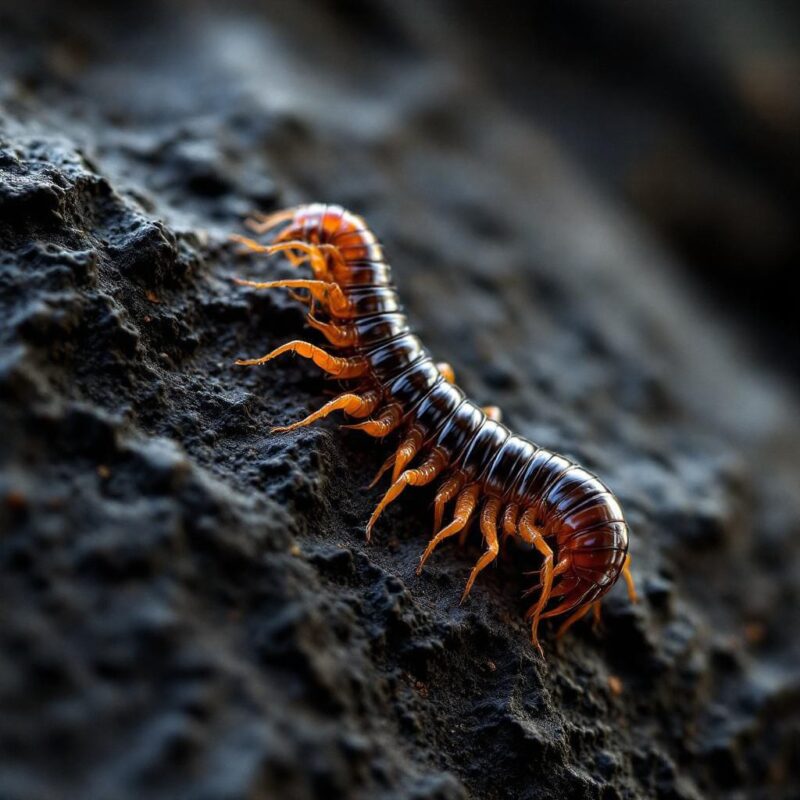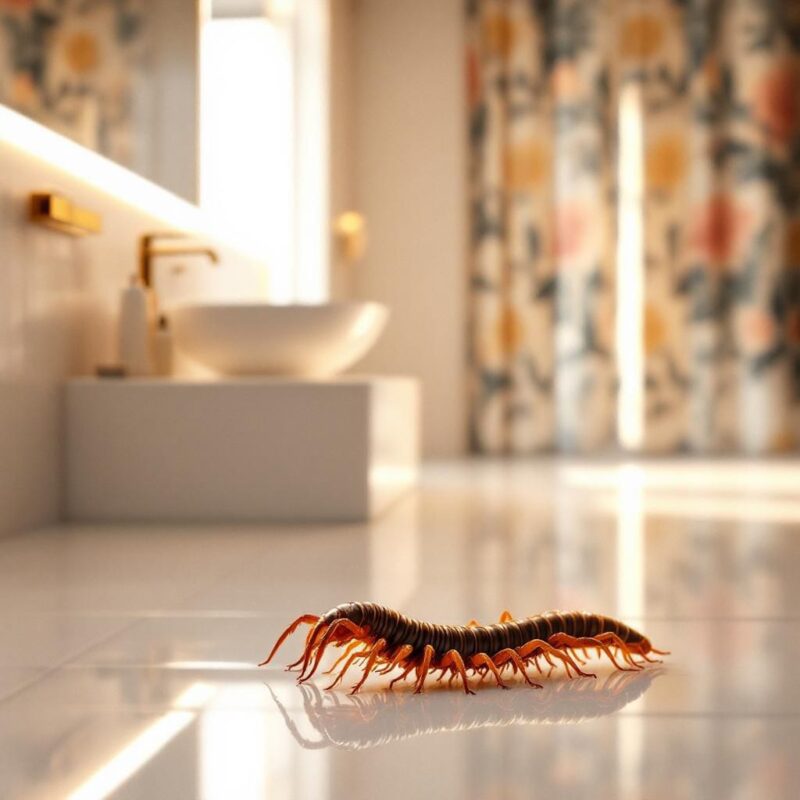Pest Library
Centipedes Facts &
Information
Centipedes are elongated, many-legged arthropods known for their fast movement and predatory behavior. Despite their name, which means “hundred feet,” most centipedes have between 15 to 177 pairs of legs, depending on the species. They are usually found in dark, damp environments like under rocks, in soil, bathrooms, basements, or near drains.

Class Chilopoda
IDENTIFY
What do centipedes look like?
Centipedes are elongated, segmented creatures with a flattened body. They have many legs, with one pair per body segment, giving them a distinct appearance. Their color varies from yellowish-brown to reddish-brown, often with dark markings. Centipedes have long antennae and a pair of venomous pincers near their head, used to capture prey.
Locate them
Where Are Centipede
Found?
Centipedes are typically found in dark, damp, and cool environments where they can stay hidden and hunt for small insects. Outdoors, they live under rocks, logs, leaf piles, and in soil or mulch. Indoors, they are commonly found in basements, bathrooms, kitchens, closets, and around drains or pipes—anywhere with moisture and shelter. Cracks in walls, floor gaps, and behind furniture also make good hiding spots for them. Because they prefer humid conditions, homes with poor ventilation or water leaks are more likely to attract centipedes.

Forest Floors
Hidden in soil, under logs, or within leaf litter, these areas provide ideal humidity and protection for centipedes to thrive.

Caves and Burrows
These natural shelters offer constant moisture and darkness, essential for their survival and hunting activities.

Bathrooms and Basements
Indoors, they are drawn to areas with high humidity, like damp corners, drains, and dark storage spaces.

Gardens and Yards
Often found beneath mulch, stones, and decaying leaves, where moisture and shelter are abundant. They hunt small insects and hide from predators.
Pest Treatment
Understanding Centipede
& Prevention
To prevent centipedes from entering your home, it’s important to reduce moisture and eliminate their hiding spots. Fix leaky pipes, improve ventilation in damp areas like basements and bathrooms, and use a dehumidifier if needed. Seal cracks, gaps, and entry points around doors, windows, and the foundation. Keep your home clean and clutter-free, especially in storage areas where centipedes might hide. Remove piles of leaves, wood, or debris from around your house, and trim vegetation close to the walls. Since centipedes feed on other insects, controlling pest populations indoors will also reduce their presence.


Centipede Facts
Understanding
Centipede Problems
The more you know about centipede, the better you can predict and control their behavior. Here are some quick facts to help you on your way.
FAQ
Frequently asked questions.
Centipedes enter homes for moisture, dark hiding spots, and prey like insects or spiders found in damp areas.
Centipedes are not fatal but can bite, causing pain, redness, or swelling. Larger species may trigger mild allergic reactions.
Reduce indoor humidity, seal gaps or cracks, and remove pests that serve as their primary food source.
Professional pest control treatments target damp zones and eliminate pest infestations, reducing centipede presence effectively.
Eliminate pests and prevent future problems.
- +91 9607171409
